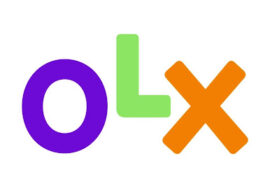
A Comprehensive Guide to On-demand Food Delivery Clone Apps
The food delivery market has experienced explosive growth, driven by technological advancements and changing consumer behaviors. For entrepreneurs looking to enter this lucrative industry, clone apps—replicas of successful food delivery platforms like UberEats, Grubhub, or DoorDash—provide a quick and cost-effective solution. This guide offers a comprehensive overview of on-demand food delivery clone apps, from their benefits to how to successfully launch one.
Understanding Clone Apps
Clone apps are essentially pre-built solutions that mimic the features and functionalities of established food delivery services. They are designed to be easily customized to suit different business needs, allowing new entrants to quickly set up their services with a much lower development cost and faster market entry.
Benefits of Using Clone Apps
- Reduced Development Time and Cost: Developing a food delivery app from scratch is time-consuming and expensive. Clone apps reduce these costs significantly by providing a ready-made framework that only needs minor adjustments to go live.
- Proven Business Model: By adopting a clone app, entrepreneurs can leverage a business model that has already been tested and proven successful in the market, minimizing risks.
- Ease of Customization: Despite being pre-built, clone apps offer extensive customization options to ensure the platform can be tailored to reflect your brand identity and meet specific market demands.
Key Features to Include in Your Clone App
To compete effectively, your clone app should include several key features:
- User-Friendly Interface: An intuitive and easy-to-navigate interface enhances user experience, encouraging repeat usage.
- Multiple Payment Options: Offering various payment methods, including credit cards, PayPal, and mobile wallets, caters to consumer preferences and improves convenience.
- Real-Time Tracking: Customers appreciate being able to track their orders in real-time, which adds transparency to the delivery process.
- Ratings and Reviews: Allowing customers to rate and review services and dishes helps maintain high quality and customer trust.
- Customer Support: Robust customer support resolves issues quickly, improving overall customer satisfaction.
Steps to Launch Your Food Delivery Clone App
- Market Research: Understand your local market’s needs and preferences to tailor your services appropriately.
- Choose the Right Clone App Provider: Select a reputable provider with a track record of successful deployments, ensuring you receive a quality product and good support.
- Customization: Work with your provider to customize the app, focusing on branding and features that will distinguish your service in the market.
- Testing: Thoroughly test the app to iron out any bugs and ensure a smooth user experience.
- Launch and Marketing: Launch your app with a strong marketing campaign to generate buzz and attract users.
Capitalizing on the Clone App Advantage
Launching an on-demand food delivery service using a clone app offers a viable shortcut to success in this competitive market. By understanding the fundamentals of clone apps and focusing on essential features and robust marketing strategies, you can create a thriving food delivery service that meets the needs of modern consumers. Remember, the key to success lies in how well you adapt the clone app to serve your unique market and how effectively you engage with your customers.








